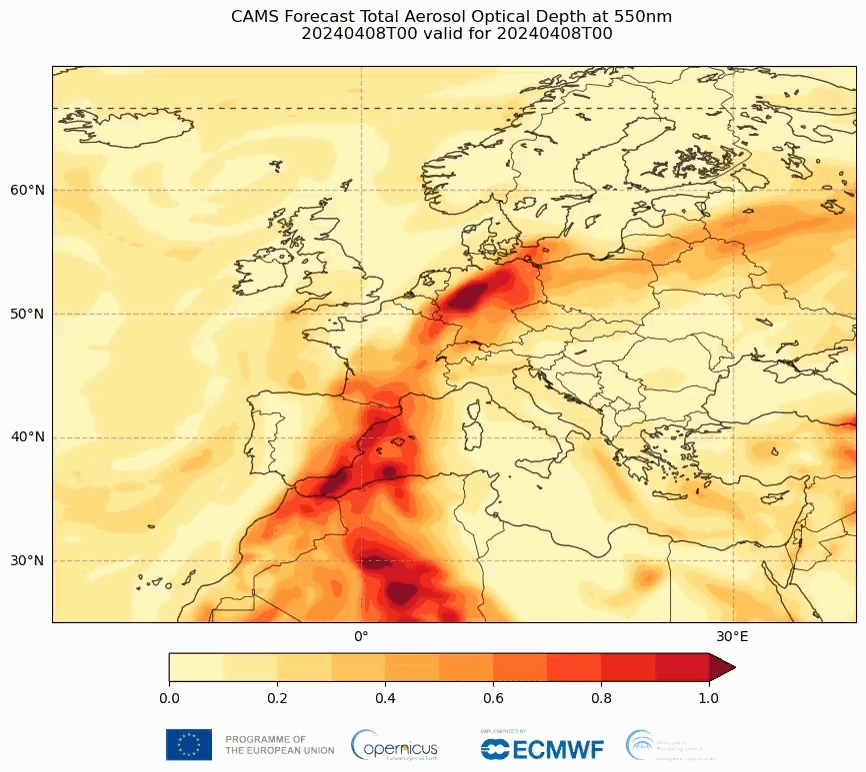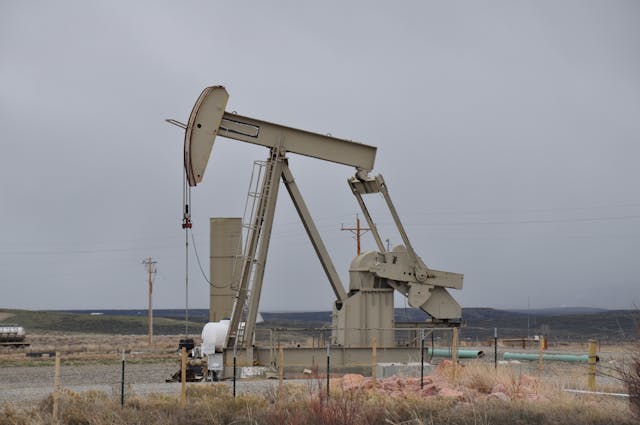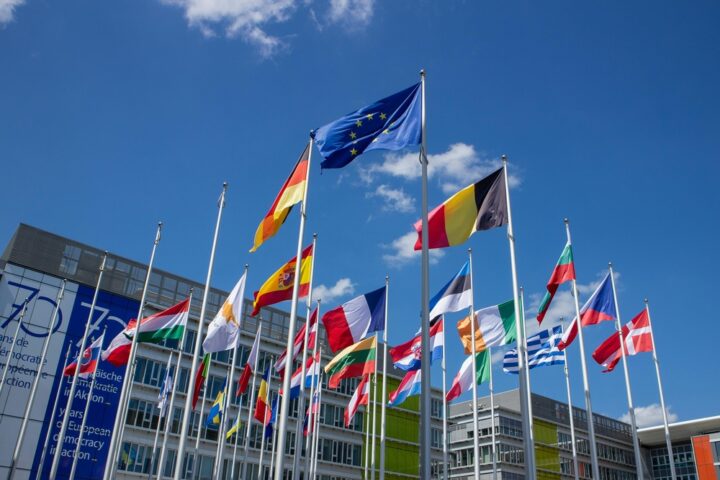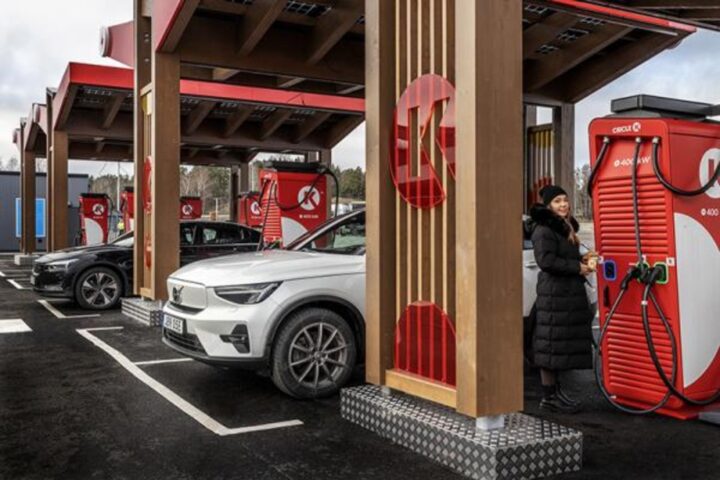An “exceptional” amount of Sahara dust has been crossing Western Europe from south to north since Saturday, negatively affecting air quality, warned the European monitoring agency Copernicus on Monday, April 8.
This phenomenon, the third in two weeks, of large-scale Saharan dust moving across Europe has led to high concentrations of PM10 (particles with a diameter of less than 10 micrometers) in the Iberian Peninsula as well as in certain regions of France and Germany, sometimes exceeding the daily European standard, according to Copernicus‘ air quality monitoring service (CAMS).
“Daily maximum values of CAMS PM10 forecasts have been showing significant concentrations at surface level, and exceeding the EU 24-hour mean exposure threshold of 50 µg/m3 in some of the affected regions. ” states Copernicus in a press release.
These concentrations will continue to rise in the coming days due to atmospheric circulations that extend this transport, warns CAMS.
The dust plume has already crossed most of the Iberian Peninsula, reaching southeastern France and Germany, up to Scandinavia.
“This latest Saharan dust episode is the third of its kind in the last two weeks, and is related to the weather pattern that led to warmer weather across western Europe in recent days. The two previous episodes were mainly over the Mediterranean and southern Europe, although some effects such as deposition on people’s cars occurred as far north as Scandinavia last weekend. While it is not unusual for Saharan dust plumes to reach Europe, there has been an increase in the intensity and frequency of such episodes in recent years, which could be potentially attributed to changes in atmospheric circulation patterns.” he adds.
Spain was particularly affected with heavy blankets of dust making the regions look like Martian lanmdscapes. Local authorities advised people to stay indoors and not exercise outdoors and to wear masks when they were outside. Pulmonary disorders and allergies make people more susceptible to sudden increases in particulate matter pollution in the air.In France on Sunday, the regional air quality observatory Atmo Occitanie warned of degraded air quality, with five departments – Haute-Garonne, Gers, Ariège, Pyrénées-Orientales, Hautes-Pyrénées – at level 4 (poor) on a scale ranging from 1 (good) to 6 (extremely bad).
Exposure to high levels of PM10 can have various health effects, including triggering asthma attacks or allergies and exacerbating certain respiratory or cardiovascular conditions, especially in vulnerable individuals (pregnant women, children, elderly people, or those with compromised immune systems).


















